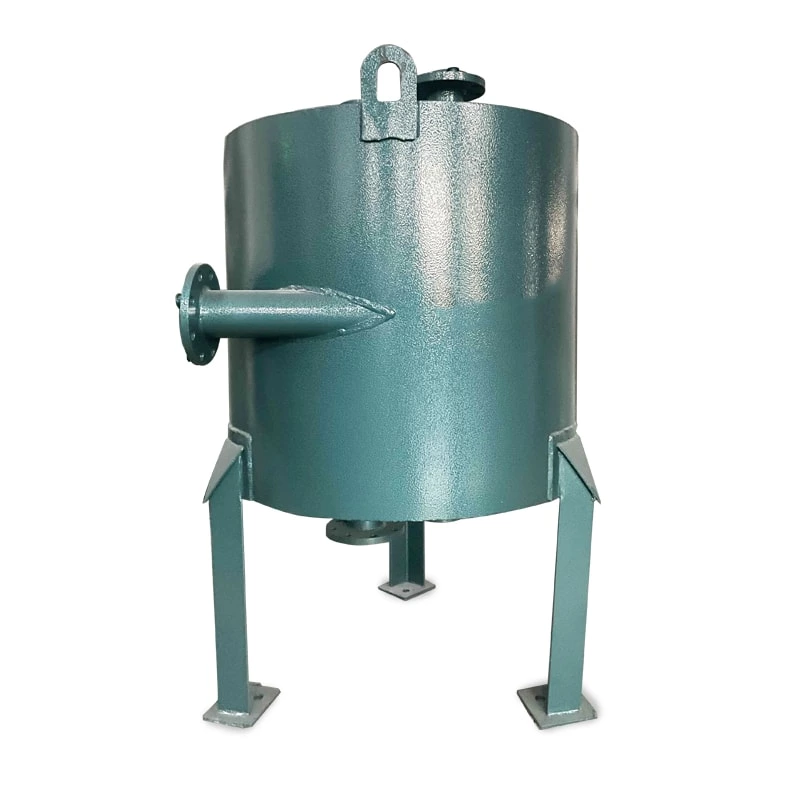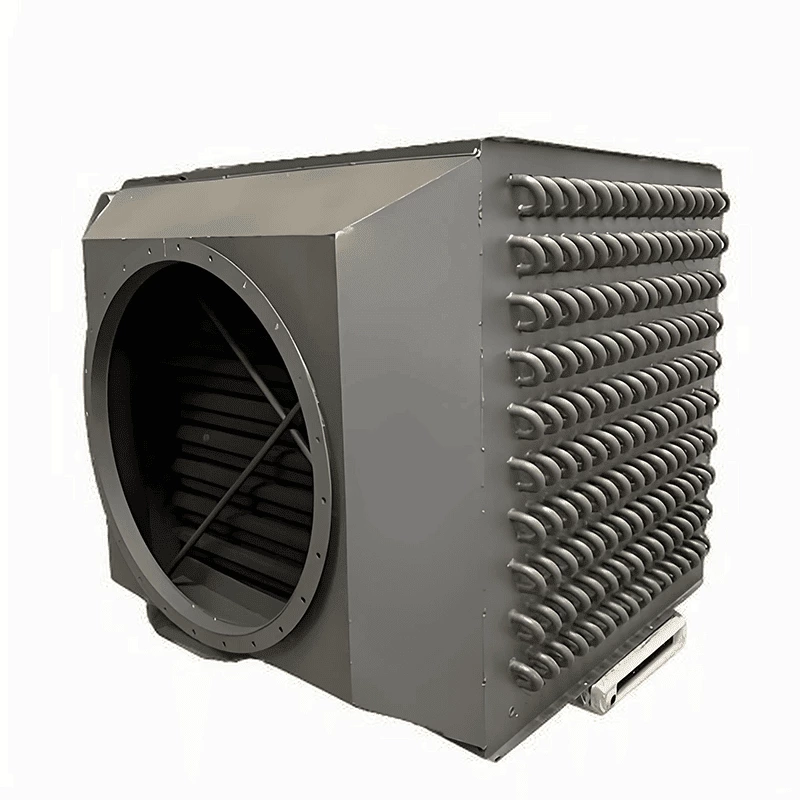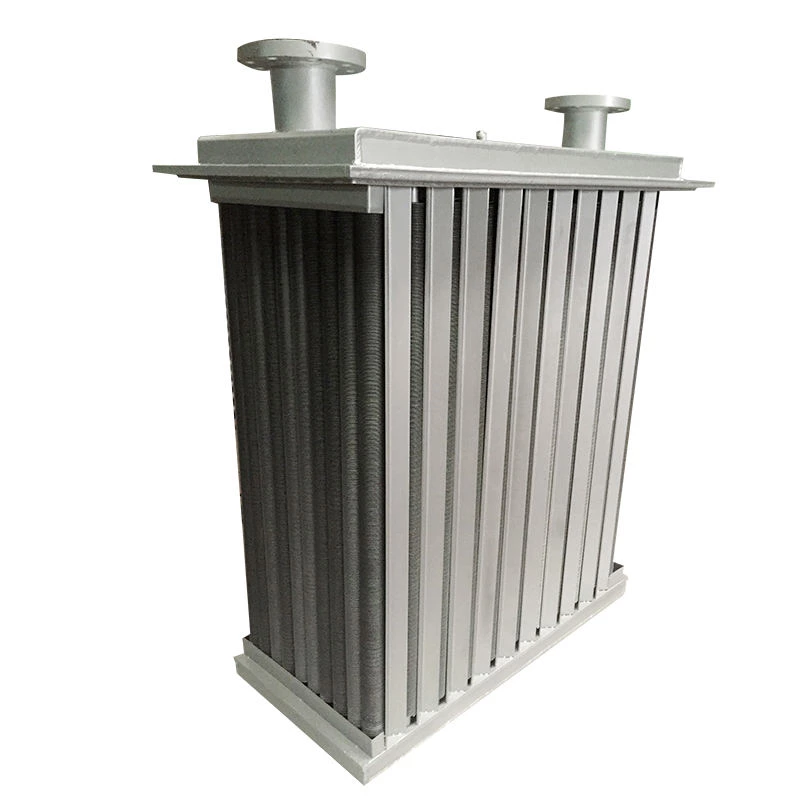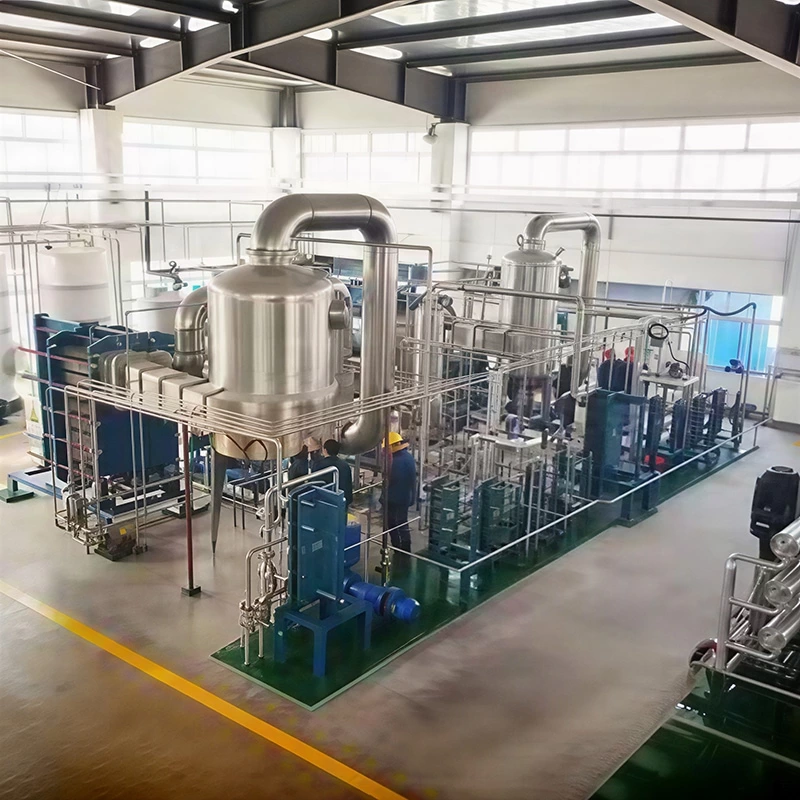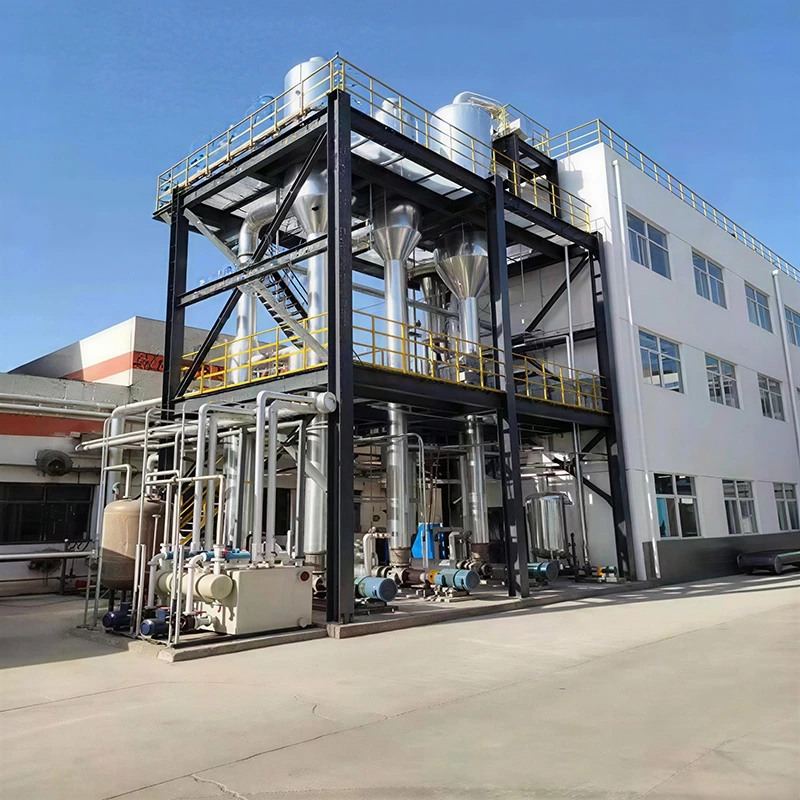Sodium Chloride Wastewater Double-effect Plate-type Rising Film+tube Forced Circulation Evaporation Crystallization

Processing medium and purpose:
Medium: industrial wastewater mainly containing sodium chloride. From chemical, pharmaceutical, food processing or coal chemical industries.
Objective: By evaporation and crystallization, the water in wastewater was evaporated, and the sodium chloride was crystallized out, so as to realize the reduction of wastewater and the recycling of salt.
Process and characteristics:
Process: adopt "two-effect" evaporation. This means that the system has two evaporators working in series, and the steam generated by the first effect is used as the heat source of the second effect, thus greatly reducing the steam consumption and achieving remarkable energy-saving effect.
First effect: plate-type rising film evaporator. It is suitable for the stage with low feed concentration and high heat transfer efficiency, and the film flow is helpful for rapid evaporation.
Second effect: tubular forced circulation evaporator. Suitable for the stage of high concentration, close to or with crystal precipitation. Forced circulation can prevent scaling and blockage, and is especially suitable for crystallization process.
Production capacity: the evaporation capacity is 2.6 tons/hour, that is, 2.6 tons of water can be evaporated every hour.
Operating conditions:
Temperature: the first effect operates at a higher temperature, and the second effect operates under vacuum at a lower temperature. The whole system operates at a certain temperature and vacuum.
Pressure: the first effect is positive pressure or slightly positive pressure, and the second effect is negative pressure.
Key materials and corrosiveness:
Main materials: TA1 and TA2 are adopted. This shows that wastewater may contain chloride ions, which are extremely corrosive to stainless steel and other materials in high concentration and high temperature environment. Titanium has excellent chloride ion corrosion resistance under this working condition, which is the key to ensure the long-term stable operation of the equipment.
